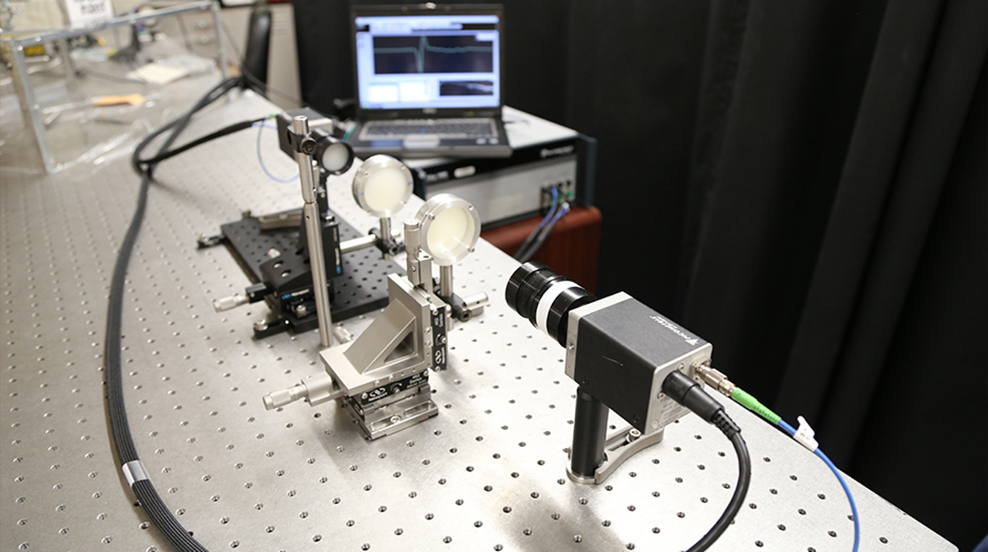
Mittleman's research group has a license to test terahertz technology on campus.
The Federal Communications Commission has issued a license for testing terahertz wireless data links, which could be the backbone of next-generation high-speed data networks, on the Brown campus.
With the ongoing massive growth in global wireless traffic, existing microwave wireless networks are rapidly becoming saturated. Terahertz waves have higher frequencies than microwaves and higher data-carrying capacity, but much more research needs to be done to make terahertz networks possible.
"In many countries, research on terahertz wireless is proceeding rapidly, but it lags behind in the U.S.," said Daniel Mittleman, an engineering professor at Brown University. "That's at least in part because relevant federal agencies have been reluctant to provide the necessary regulatory environment to encourage innovation."
Mittleman is hopeful that might be about to change.
Recently, his research group at Brown received a license from the Federal Communications Commission (FCC) to perform outdoor tests of data transmission in several frequency bands in the terahertz range.
"As far as we can tell, our license includes the highest frequency currently licensed by the FCC for any purpose," Mittleman said. "The hope is that these steps will not only clarify the feasibility of such data links, but will also spur further policy discussions and federal investments in the research that will be necessary to make terahertz communication a reality."
In order for a non-federal entity to broadcast any wireless signal in the U.S., a license from the FCC is required. The licensing system ensures that new sources of radio emissions don't interfere with any existing users on the ground and in the air. The FCC is responsible for managing and licensing the entire radio spectrum, which includes commercial radio broadcasts, aircraft communications, radar, cellular and bluetooth systems and more.
Mittleman says that the FCC has rarely issued any licenses for any frequencies above 95 gigahertz (the terahertz range can be said to begin at 100 gigahertz). This new license could be a sign that the FCC is starting to take terahertz data communication seriously.
Mittleman plans to begin outdoor testing in the fall. Their license includes four terahertz frequency bands that they are able to use for tests at any location within a 1.5-kilometer radius centered at the Barus and Holley building on campus.
"These kinds of outdoor tests will be important for understanding what's possible in terahertz communication," Mittleman said. "And right now, Brown is the only place in the country where those tests can legally be done."
by Kevin Stacey